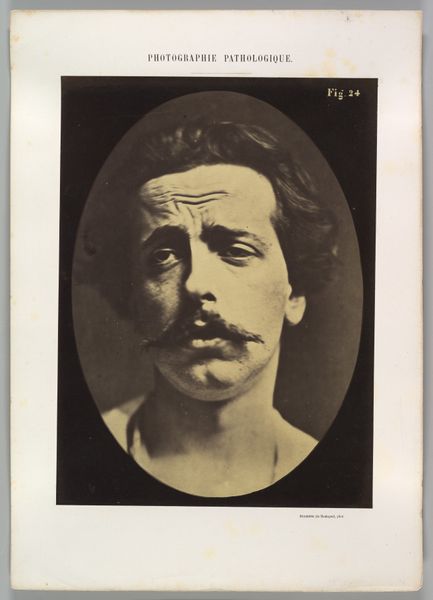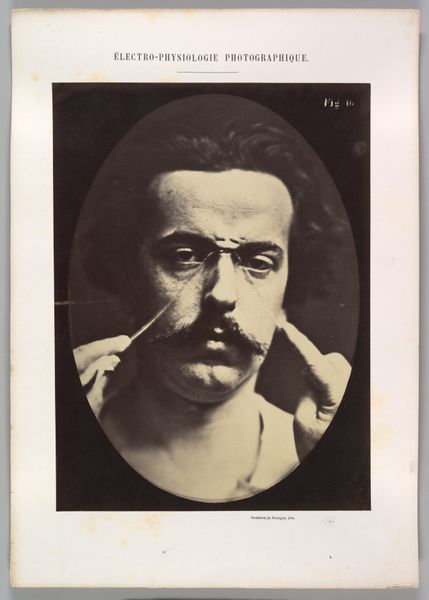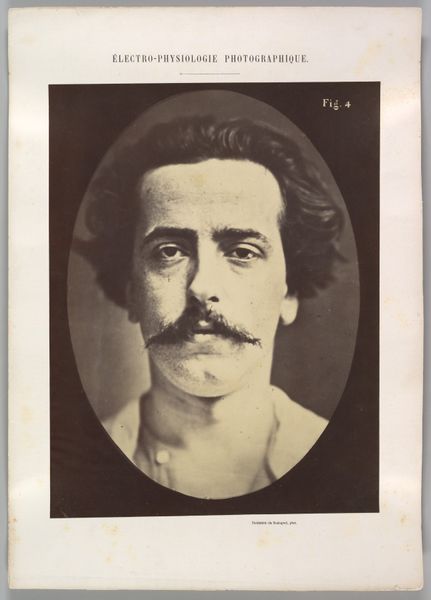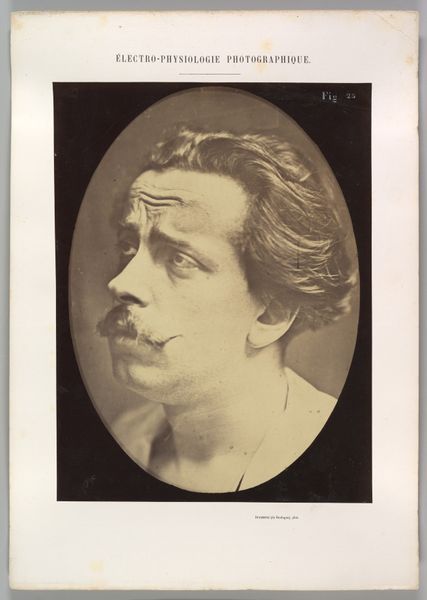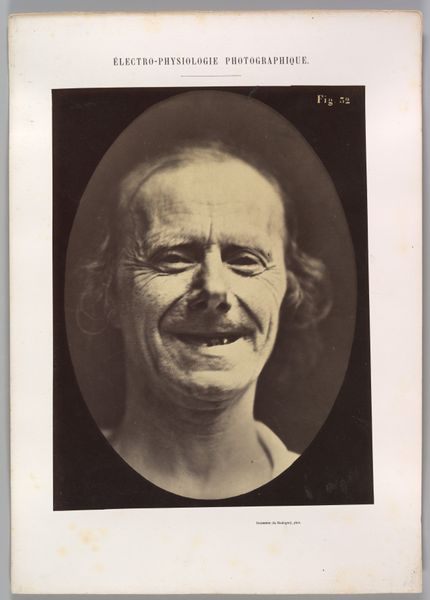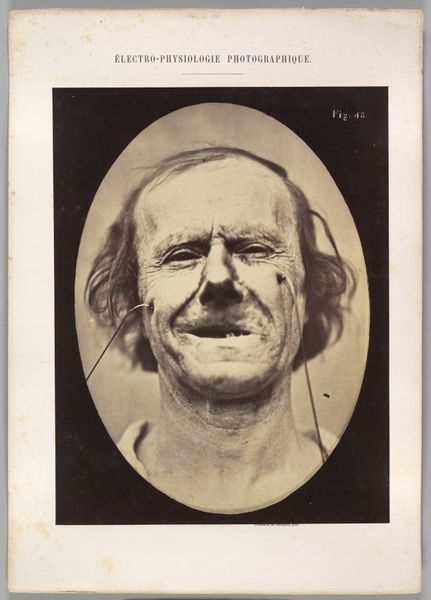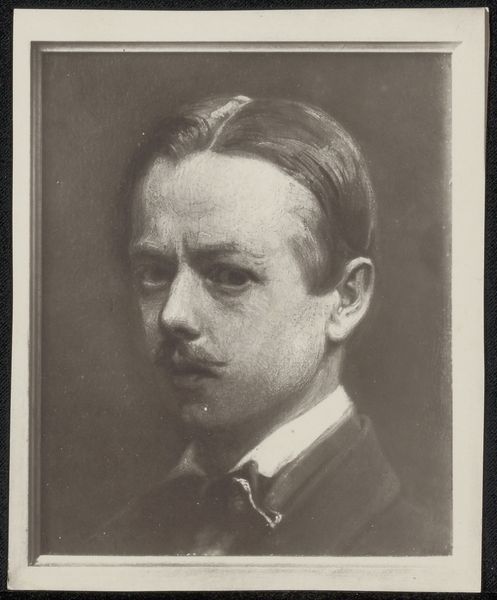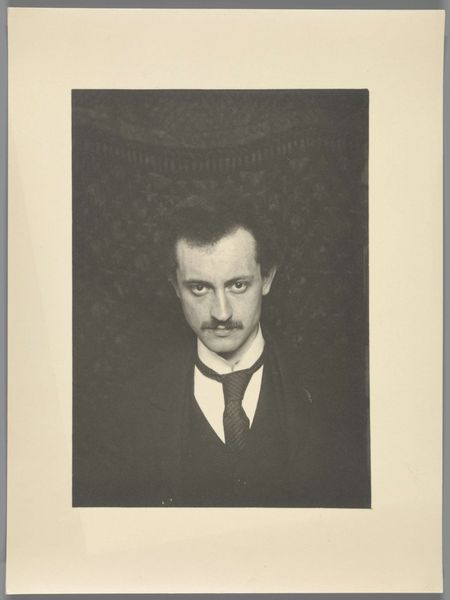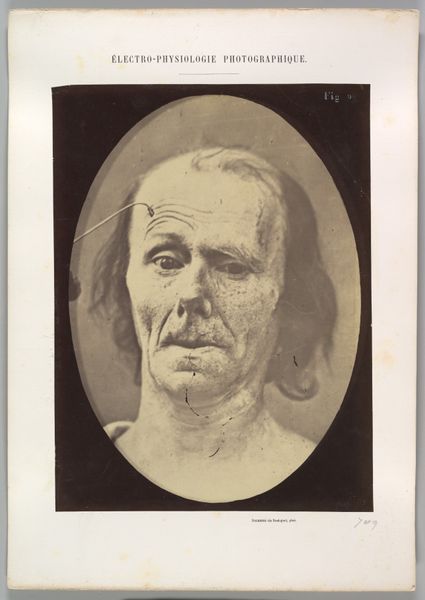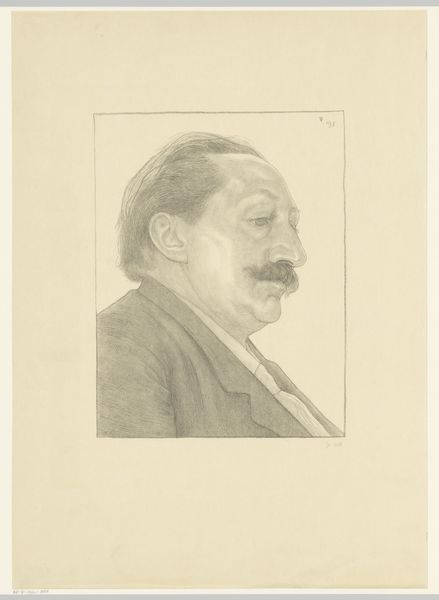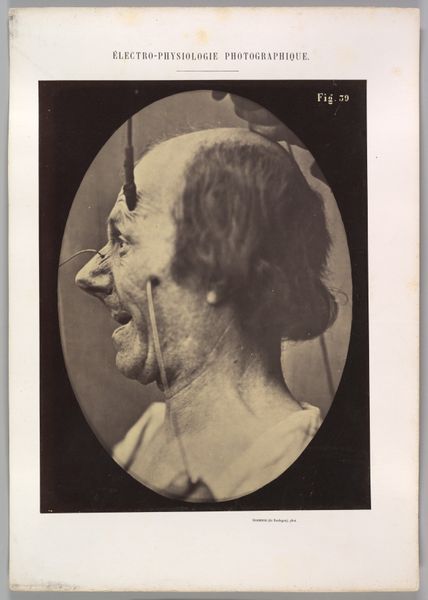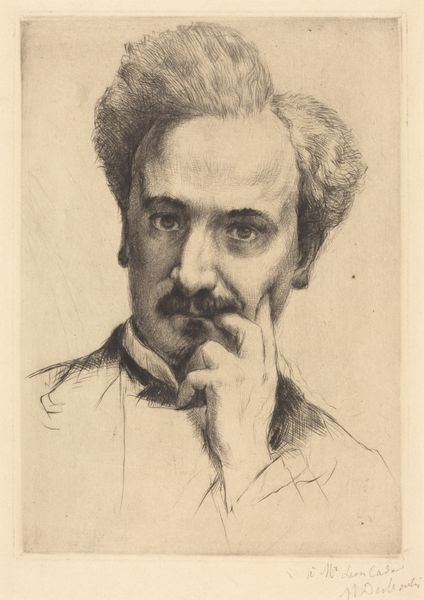
Figure 15: Mediation, mental concentration 1854 - 1856
0:00
0:00
daguerreotype, photography
#
portrait
#
daguerreotype
#
photography
#
realism
Dimensions: Image (Oval): 28.3 × 20.3 cm (11 1/8 × 8 in.) Sheet: 29.9 × 22.1 cm (11 3/4 × 8 11/16 in.) Mount: 40.1 × 28.5 cm (15 13/16 × 11 1/4 in.)
Copyright: Public Domain
Editor: This daguerreotype by Guillaume Benjamin Amand Duchenne, titled "Figure 15: Mediation, mental concentration", dates between 1854 and 1856, and is part of the collection at the Metropolitan Museum of Art. My first impression is of a man struggling with some deep inner turmoil; it’s really in the brow, isn’t it? Curator: Yes, and I’d argue that struggle is precisely the point. Duchenne, a neurologist, was interested in the physiology of emotion, mapping facial expressions through carefully controlled electrical stimulation. He saw the face as a landscape of emotional truths, not a mask. Editor: So, it’s like an early attempt at decoding the human face through photography, turning the sitter almost into a scientific instrument. You can almost feel the electrodes; the materiality of the scientific experiment really overwhelms the portrait genre, it seems. Curator: Precisely! Notice the compositional rigor: the oval vignette concentrates our gaze, pushing all distractions away from that very potent facial expression. There is such meticulous control to show an authentic emotional expression. Editor: I find it interesting that the “authenticity” hinges on such controlled conditions. The social and physical constraints put on the sitter seem paradoxical, considering that authenticity aspect. This brings up an interesting discussion around labor within photography as well. Curator: You're touching on a core tension. Is it "real" emotion if it's electrically induced? The picture aims at scientific objectivity, and yet the resulting expression feels deeply… subjective. Editor: Well, considering the broader project Duchenne embarked on, the portrait's scale and use of daguerreotype technology only heightens the tension in seeking definitive emotional representation, don’t you think? It reminds me how science uses its own crafted materials. Curator: Ultimately, "Mediation, mental concentration" offers insight into the scientific aspiration to objectively define subjective emotional experiences, as well as an exercise in the formal precision and emotional ambiguity inherent to the portrait genre. Editor: I agree. I was immediately struck by the weight of it, even with the controlled, scientific framing, but looking through your lens, I can see a compelling intersection of early scientific rigor and artistic ambition, reflected in its material existence as an object of labor and photographic study.
Comments
No comments
Be the first to comment and join the conversation on the ultimate creative platform.
